Instant Worms
Earthworms are pretty much accepted by most people but, other worms? Not so much! However, you can create a bowl of worms that everyone will enjoy. Squirting […]
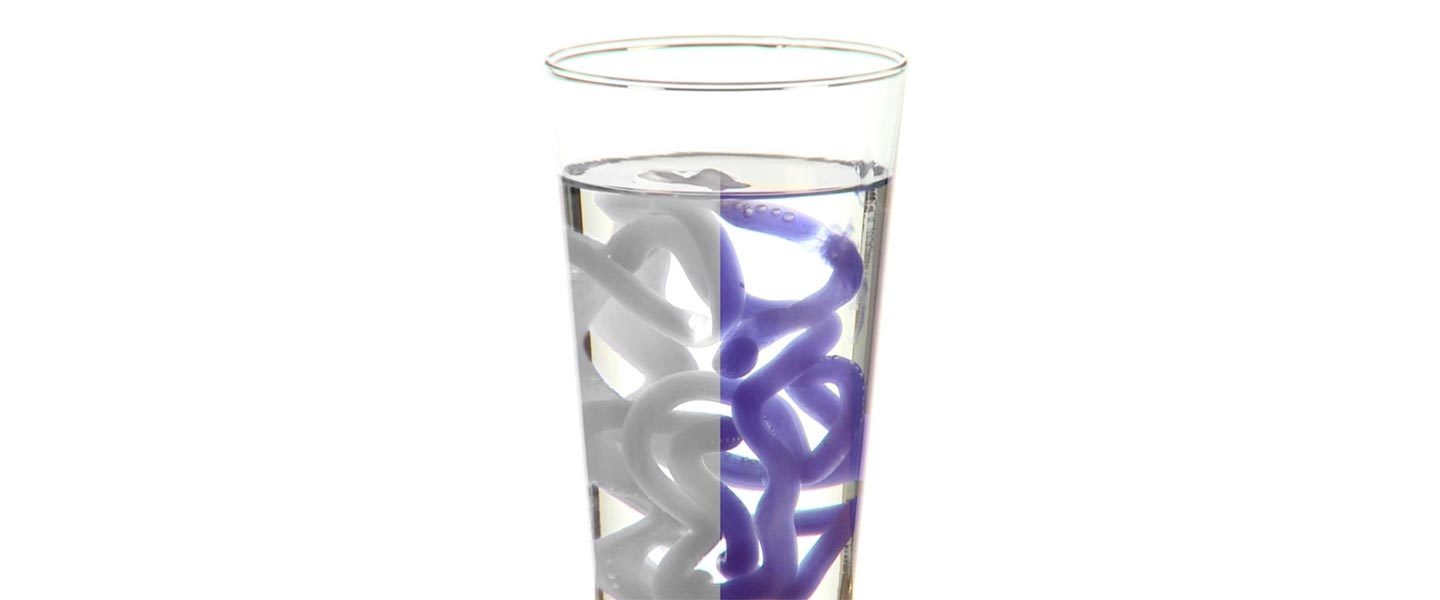
There’s nothing better than having a bowl full of worms without the hassle of digging them out of the ground… and all by using fascinating polymer science. Now our worm-ologists have made an exciting new kind of Insta-Worms that are heat sensitive! You won’t believe your eyes as temperature changes the appearance of this special kind of Insta-Worms.
SICK Science® is a registered trademark of Steve Spangler, Inc. All Rights Reserved.
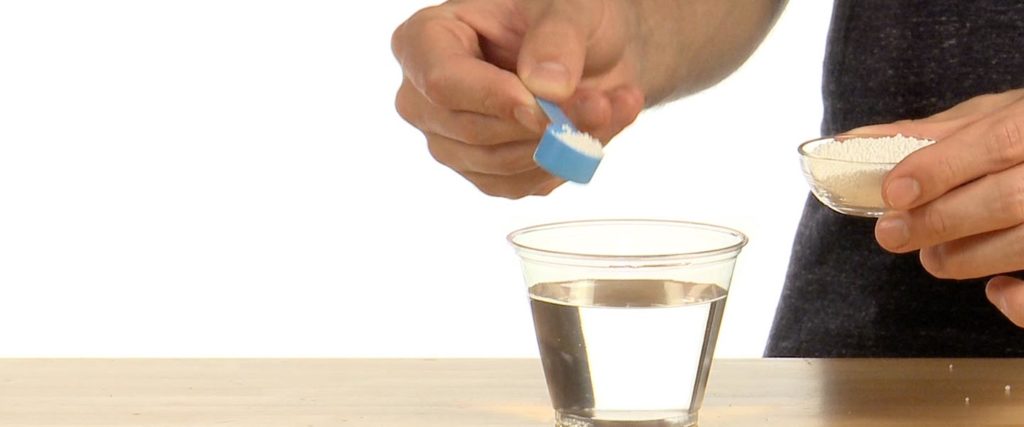
In a clear cup or glass, measure out 1 cup (8 oz) of warm water into the bowl and stir in 1 blue scoop of Worm Activator Powder. 1 blue scoop is equal to 1 teaspoon or 3 grams of Worm Activator, just in case you happen to lose the blue scoop. Make sure that most of the Worm Activator is dissolved into the water before you move on to the next step.
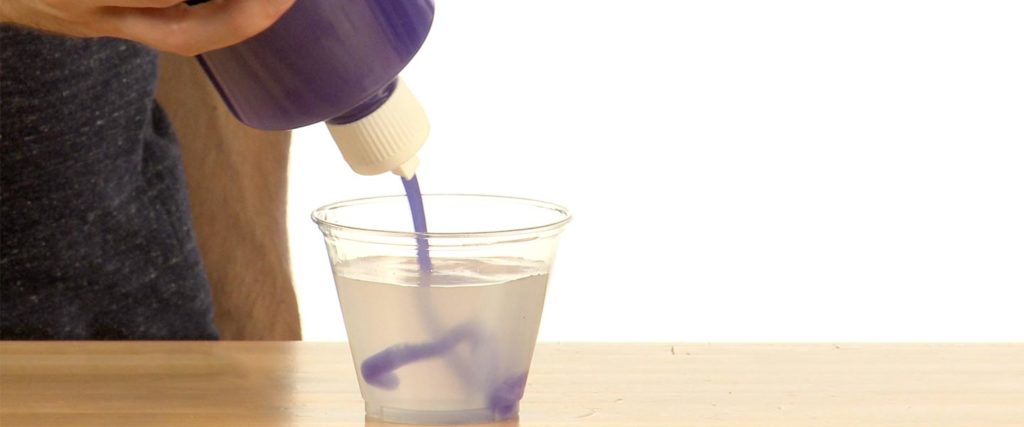
Now that you’ve got Worm Activator Solution, squirt a small stream of Worm Goo into the bowl. Watch as the goo turns into a long stringy worm!
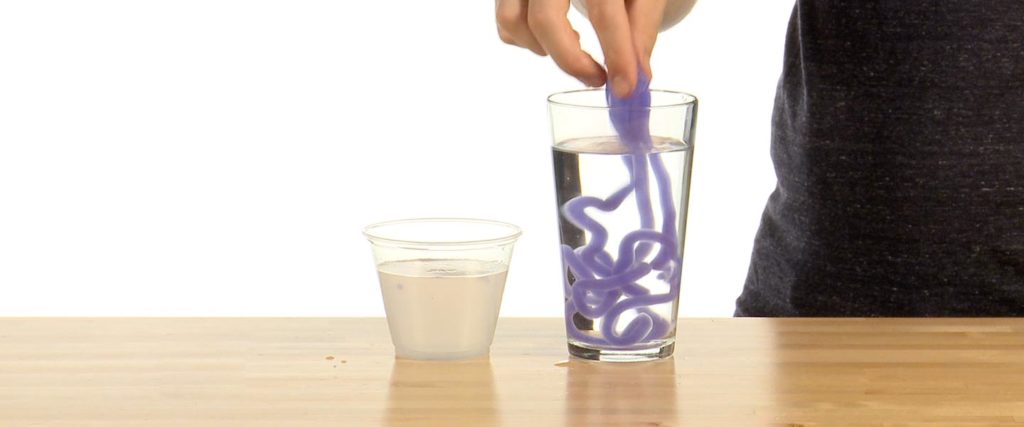
Now you’ve got to change that worm back to the beautiful blue color. Take the worm out of the warm activator solution and put the worm in a cup or bowl of cold water (the colder, the better). Depending on the thickness of your worm, the change back to blue can be instantaneous or take up to one minute.
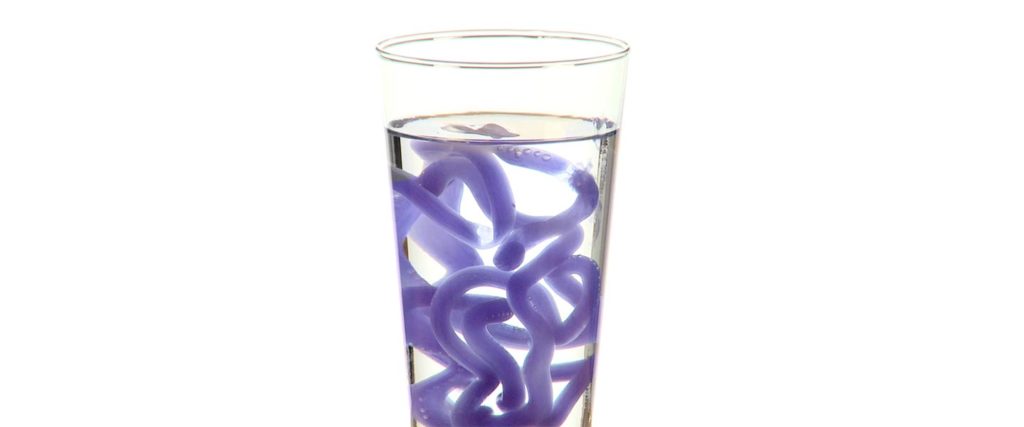
Change the worms back to blue by putting them back into warm or hot water.
When you make Insta-Worms, you’re learning about the science of polymers. The creative scientists at Steve Spangler Science coined the name Worm Goo, but the real name of this liquid is sodium alginate. Sodium alginate is a long chain of molecules called a polymer. Polymers are large molecules made by linking many smaller molecules together. Specifically, sodium alginate is a polysaccharide isolated from seaweed. Polysaccharides, such as starch and alginate, are made by linking together hundreds of glucose (sugar) molecules. Alginate is commonly used as a thickening agent for foods such as ice cream and fruit pies. Now that you know this chemistry secret, take a look at food labels the next time you’re at the grocery store to find out which other foods contain sodium alginate. Alginate compounds are also used for, among other things, dental impression materials and wound dressings.
The sodium alginate (Worm Goo) immediately changes from a liquid to a solid the moment it touches the Worm Activator solution. The Worm Activator solution contains calcium, which serves to link the long polymer chains together. Scientists call this “cross-linking.” For the scientists in the audience, here’s a more detailed description of what happens: a polymer strand is formed when the sodium alginate solution is added to a calcium chloride solution. This occurs because the Ca++ ions replace the Na+ ions and serve as a cross-linking agent to link two alginate chains together. The resulting cross-linked polymer is insoluble in calcium chloride solution and this results in the formation of the polymer strand. See, now you know!
That still leaves us with the mystery of how the Insta-Worms changed color. The secret behind this fascinating phenomenon is a special thermochromic dye in the Heat Sensitive Worm Goo. Thermochromic means that a color change (chromic) occurs in accordance with temperature (thermo). The color change on the Insta-Worm (it will happen with Worm Goo, too) happens when the temperature of the Insta-Worm reaches a certain temperature (approximately 29º C or 84.2º F). At this temperature, the pigment in the dye reacts by twisting to a new shape, changing the wavelength that it reflects. Thermochromic dyes and inks find use in a lot of objects, from color changing bath toys and coffee mugs, to child thermometers and battery indicators.
Try changing the color of your works by putting the colorless Insta-Worm into the freezer. The change will take between one to five minutes.
Changing the color of the Insta-Worms is pretty cool, but it isn’t a science fair project, yet. You can create a science fair project by identifying a variable, or something that changes, in this experiment. Let’s take a look at some of the variable options that might work:
This is just one idea, but you aren’t limited to it! Try coming up with different ideas of variables and give them a try. Remember, you can only change one thing at a time. If you are testing different ways to heat the worm, make sure that the other factors remain the same!